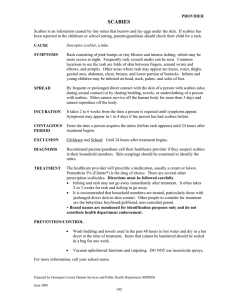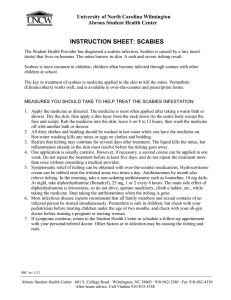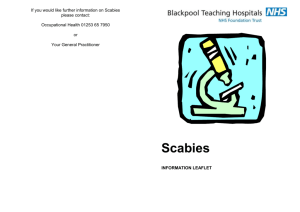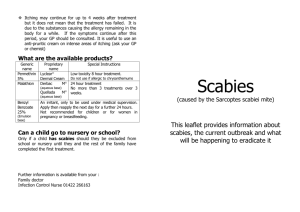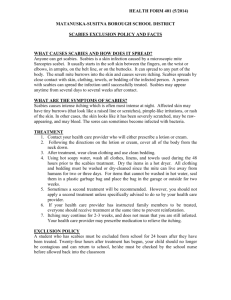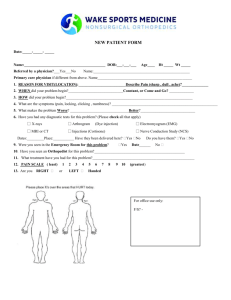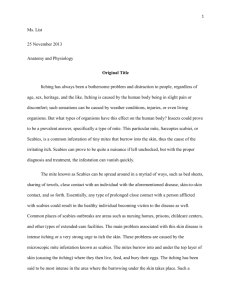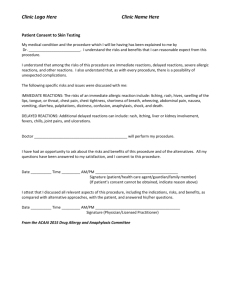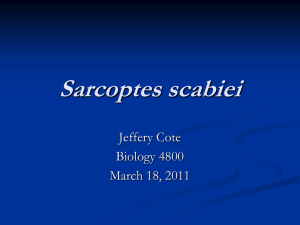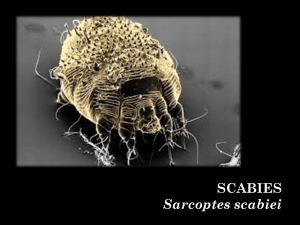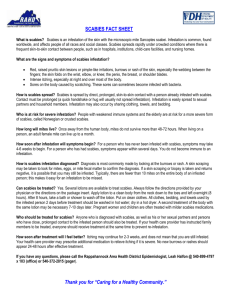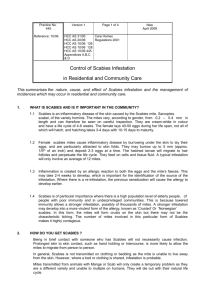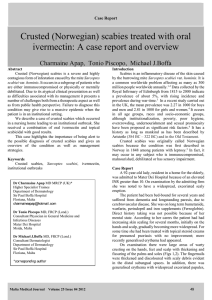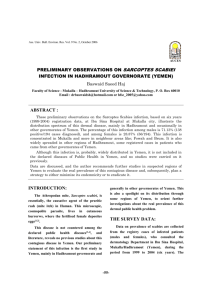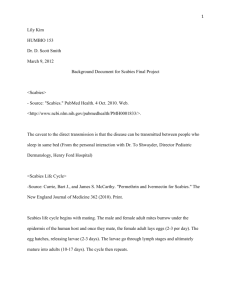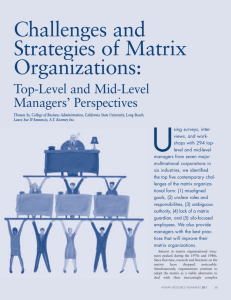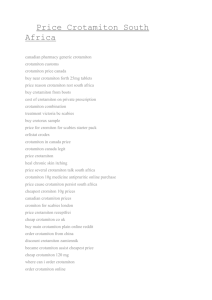NORTHWEST MIOCHIGAN HEALTH SERVICES, INC
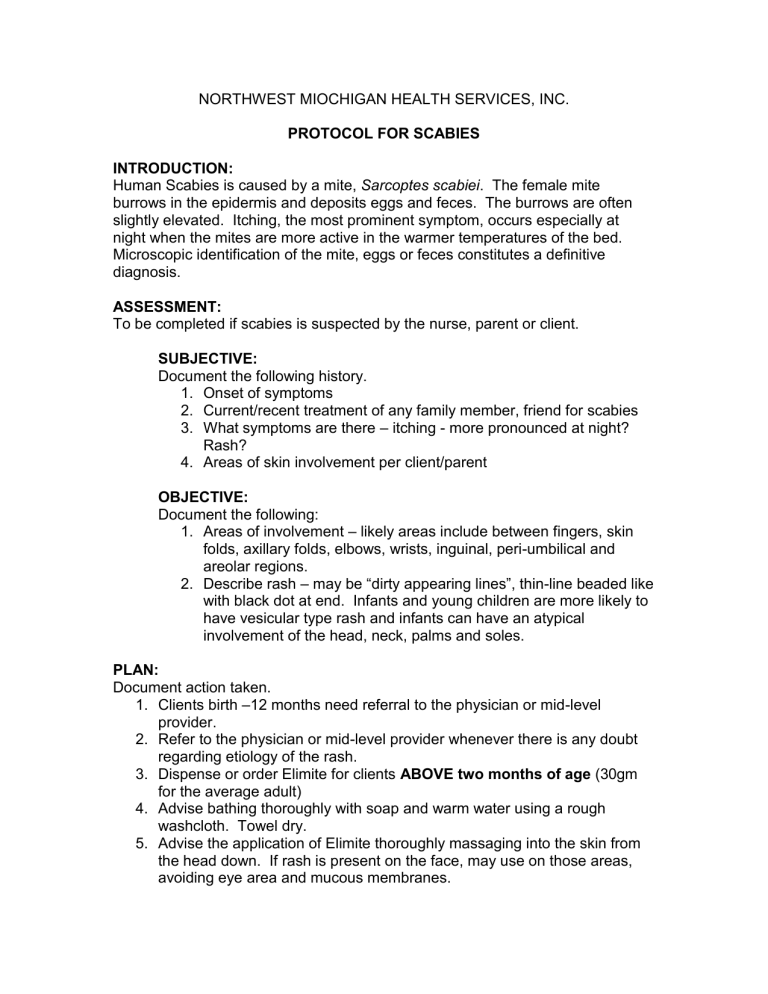
NORTHWEST MIOCHIGAN HEALTH SERVICES, INC.
PROTOCOL FOR SCABIES
INTRODUCTION:
Human Scabies is caused by a mite, Sarcoptes scabiei . The female mite burrows in the epidermis and deposits eggs and feces. The burrows are often slightly elevated. Itching, the most prominent symptom, occurs especially at night when the mites are more active in the warmer temperatures of the bed.
Microscopic identification of the mite, eggs or feces constitutes a definitive diagnosis.
ASSESSMENT:
To be completed if scabies is suspected by the nurse, parent or client.
SUBJECTIVE:
Document the following history.
1. Onset of symptoms
2. Current/recent treatment of any family member, friend for scabies
3. What symptoms are there – itching - more pronounced at night?
Rash?
4. Areas of skin involvement per client/parent
OBJECTIVE:
Document the following:
1. Areas of involvement – likely areas include between fingers, skin folds, axillary folds, elbows, wrists, inguinal, peri-umbilical and areolar regions.
2. Describe rash – may be “dirty appearing lines”, thin-line beaded like with black dot at end. Infants and young children are more likely to have vesicular type rash and infants can have an atypical involvement of the head, neck, palms and soles.
PLAN:
Document action taken.
1. Clients birth –12 months need referral to the physician or mid-level provider.
2. Refer to the physician or mid-level provider whenever there is any doubt regarding etiology of the rash.
3. Dispense or order Elimite for clients ABOVE two months of age (30gm for the average adult)
4. Advise bathing thoroughly with soap and warm water using a rough washcloth. Towel dry.
5. Advise the application of Elimite thoroughly massaging into the skin from the head down. If rash is present on the face, may use on those areas, avoiding eye area and mucous membranes.
6. Advise to wash off after 8-14 hours.
7. A reapplication may be needed in 1 week if the condition is a severe and slow responding. Those clients should be rescheduled for a clinic visit with a provider to rule out contributing causes.
8. Instruct client to machine-wash and dry clothing and bedding using the hot cycle.
9. All family members and sexual partners may be treated simultaneously to eliminate the mite.
10. It is not necessary nor advisable to disinfect or fumigate the house/furnishings.
11. Advise clients/parents that itching may continue for approximately (2) weeks after successful treatment.
12. Palliative treatment for protracted itching:
Children under 12 years: 12 years of age to adult:
Benadryl Elixer (12.5mg/5ml) Benadryl Capsules (25 mg)
12 months to 2 years: ½ tsp. q 6 hrs 25 –50 mg q 6 hrs
2 years
6 years
– 4 years: ¾ tsp q 6 hrs
– 12 years: 1 tsp q 6 hrs
RETURN VISIT:
RTC in (1) week if symptoms continue. If symptoms worsen, refer to next physician/mid-level provider available clinic time for evaluation.
Protocol to be followed by:
Mid-level provider_____ RN_____ LPN_____
Approved by:
________________ _______________________________________
(MD, NMHSI Medical Director) (Date)
_______________________________________
(Clinical Services Director)
_______________________________________
Clinic Director)
References:
Boynton et al (1998). Manual of Ambulatory Pediatrics
Gellis & Kagan (2000) Current Pediatric Therapy
Lange (2003) C.M.D.T. Adult Ambulatory Management
(Prot.scabies)
Rev. 5/01. rev 01/06
________________
(Date)
________________
(Date)
